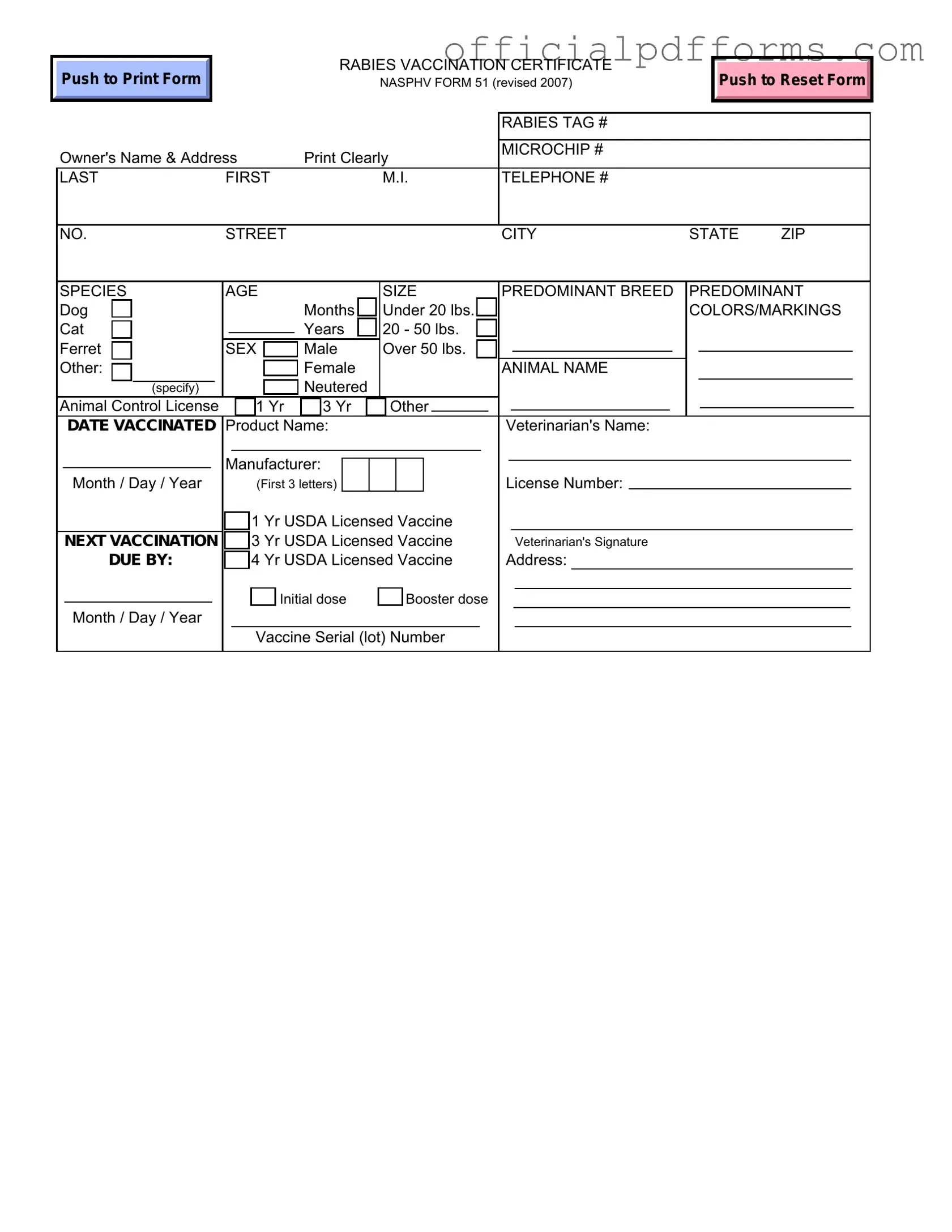What is a Rabies Certificate?
A Rabies Certificate is an official document that confirms your pet has received a rabies vaccination. It includes important details such as the vaccination date, the type of vaccine used, and the veterinarian who administered it. This certificate is crucial for pet owners, as it helps ensure the health and safety of both pets and people in the community.
Why is a Rabies Certificate important?
This certificate is essential for several reasons:
-
It proves that your pet has been vaccinated against rabies, which is a deadly virus.
-
Many states and municipalities require proof of rabies vaccination for pet licensing.
-
In case of a bite or exposure incident, it provides evidence that your pet is vaccinated.
-
It helps protect public health by preventing the spread of rabies.
How can I obtain a Rabies Certificate?
To obtain a Rabies Certificate, you need to take your pet to a licensed veterinarian. During the visit, the vet will administer the rabies vaccine and fill out the certificate. Ensure that you provide accurate information about your pet, including species, age, and any identifying details like a microchip number.
The Rabies Certificate typically includes the following information:
-
Owner's name and address
-
Pet's name, species, age, size, and breed
-
Microchip number (if applicable)
-
Vaccination date and the next due date for vaccination
-
Vaccine product name and manufacturer
-
Veterinarian's name and license number
-
Rabies tag number
How long is a Rabies Certificate valid?
The validity of a Rabies Certificate depends on the type of vaccine administered. Typically, there are one-year and three-year vaccines available. Your veterinarian will indicate the duration on the certificate. Always keep track of when your pet's next vaccination is due to maintain compliance with local laws.
What should I do if I lose my Rabies Certificate?
If you lose your Rabies Certificate, don’t panic. Contact your veterinarian, who can provide a replacement certificate. Be ready to give them details about your pet and the original vaccination date to help them retrieve your records quickly.
Are there any exceptions to rabies vaccination requirements?
Some exceptions may apply, depending on local laws and regulations. For example, certain pets may be exempt due to medical conditions or age. If you believe your pet qualifies for an exemption, consult your veterinarian or local animal control office for guidance. They can provide the most accurate information based on your specific situation.
